CyanogenMod vs AOKP
CyanogenMod 10.1 vs. AOKP - a comparison of the two most popular custom firmwares!

CyanogenMod (hereinafter CM), undoubtedly, is the most popular custom firmware based on AOSP. However, precisely because of this popularity and the number of supported devices, the development team has to think a thousand times before adding a new function or application. Despite the fact that CM used to be known as the most customizable firmware based on AOSP, it has already lost this title.
Crown passed AOKP ROM, which is currently used by more than a million users worldwide. Shortly after the development of AOKP ROM by a senior student Roman Birg, Google and Samsung launched the Galaxy Nexus. The firmware quickly gained popularity in the community of Galaxy Nexus owners due to its wide capabilities and flexible settings, and was soon ported to other devices.
')
I installed both CM 10.1 and AOKP ROM on my Nexus 4 at the very beginning, when it first appeared. And if I felt at home at CM, then at AOKP I lacked several functions, such as vibration when answering a call. Then it determined my choice.
However, time passed and everything changed. AOKP ROM now provides so many settings that you’ll grow old rather than play around with them.
So, what exactly does AOKP offer beyond what is in CM10.1, and if it is so cool, then why is CM still more popular? Before we proceed to the direct comparison of firmware, I would like to give some basic information about them.
- The CyanogenMod team is trying to stay as close as possible to the original Android (AOSP), while adding a few must-haves of tweaks. Thus, CM can be considered as stock Android on steroids, unlike AOKP - the Android OS version, where you can customize literally everything.
- AOKP uses CyanogenMod code base for compatibility with different devices. However, this does not mean at all that they are simply tying up the features from the CyanogenMod github. They also add tons of their baubles, written entirely from scratch, which in some cases are even added by the CyanogenMod team to their firmware.
- Steve Kondik, founder of CyanogenMod, previously worked for Samsung, but this work of hiss has nothing to do with CM. He currently does not want to name his current employer.
- CyanogenMod quite recently (May 18, 2013) overcame the mark of 5 million installations, while AOKP only 1 million a little earlier this year.
- The CyanogenMod team generally has a more professional approach to their work and firmware compared to AOKP. This is mainly due to the fact that CM is much older, bigger and more popular than AOKP. However, the AOKP team is also making significant progress in this direction, especially if you look at their new website , which was presented very recently.
Common features of CyanogenMod and AOKP firmware
- Both are based on the latest version of Android.
- Added ability to customize quick settings "in the blind"
- T9 dialer with call statistics
- Stock AOSP browser
- Stock app for messages with the ability to preview messages in the notification area
- Setting the LED display (a'la Light Flow )
- Support themes
- Special display brightness settings
- Volume key activation
- Control music with volume keys
- The ability to disable the input method switch
- Indication of battery charge as a percentage in the status bar
- Advanced Sound Control Panel
- Advanced Power Management Menu
- Fullscreen mode (hide softkey and stusbar)
- Improved camera application (with voice control type buns)
- Quiet hours (do not disturb mode)
- Display of available RAM in the menu of recent applications
- Widgets in the notification bar
- Quick Launch shortcut support ...
- ... including on the lock screen
- The option "Widgets on the lock screen is always maximized"
- Vibration when you answer / accept a call or the second incoming
Screenshots Developer Settings
Developer Settings
 CLock widget settings
CLock widget settings
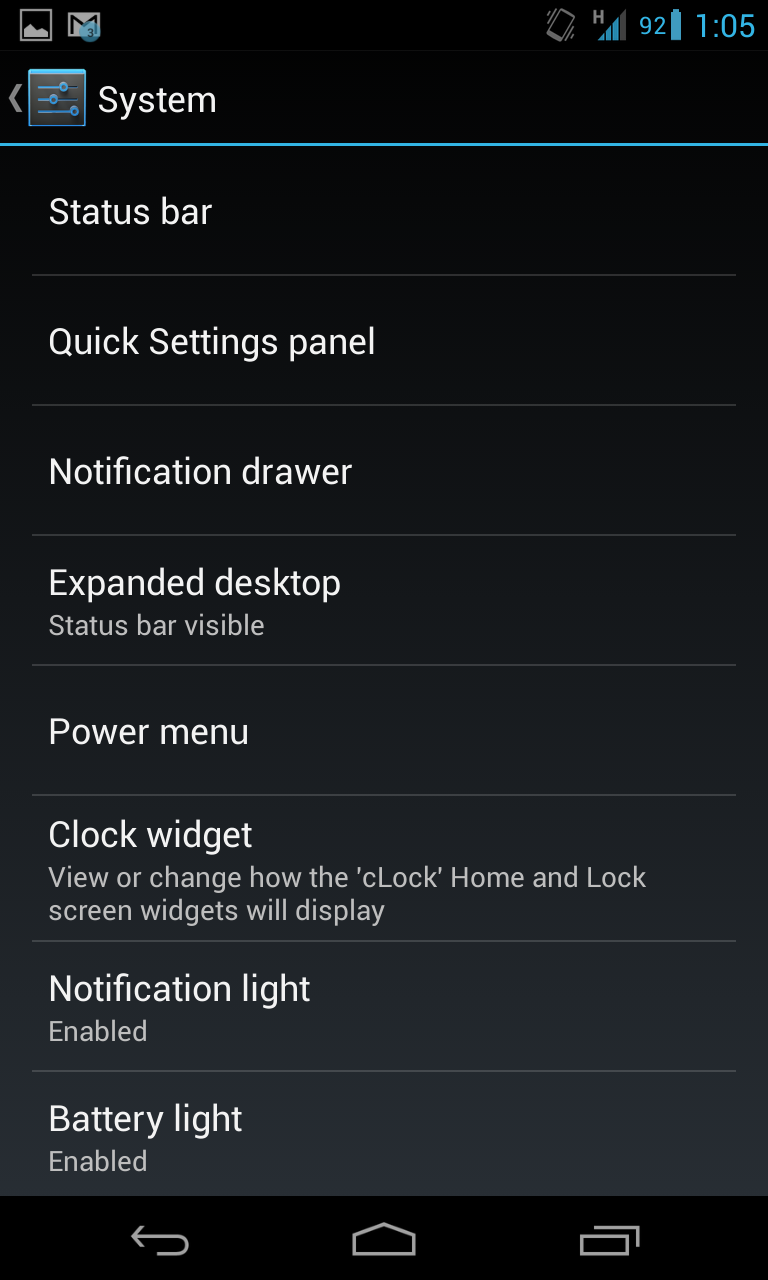 System settings
System settings
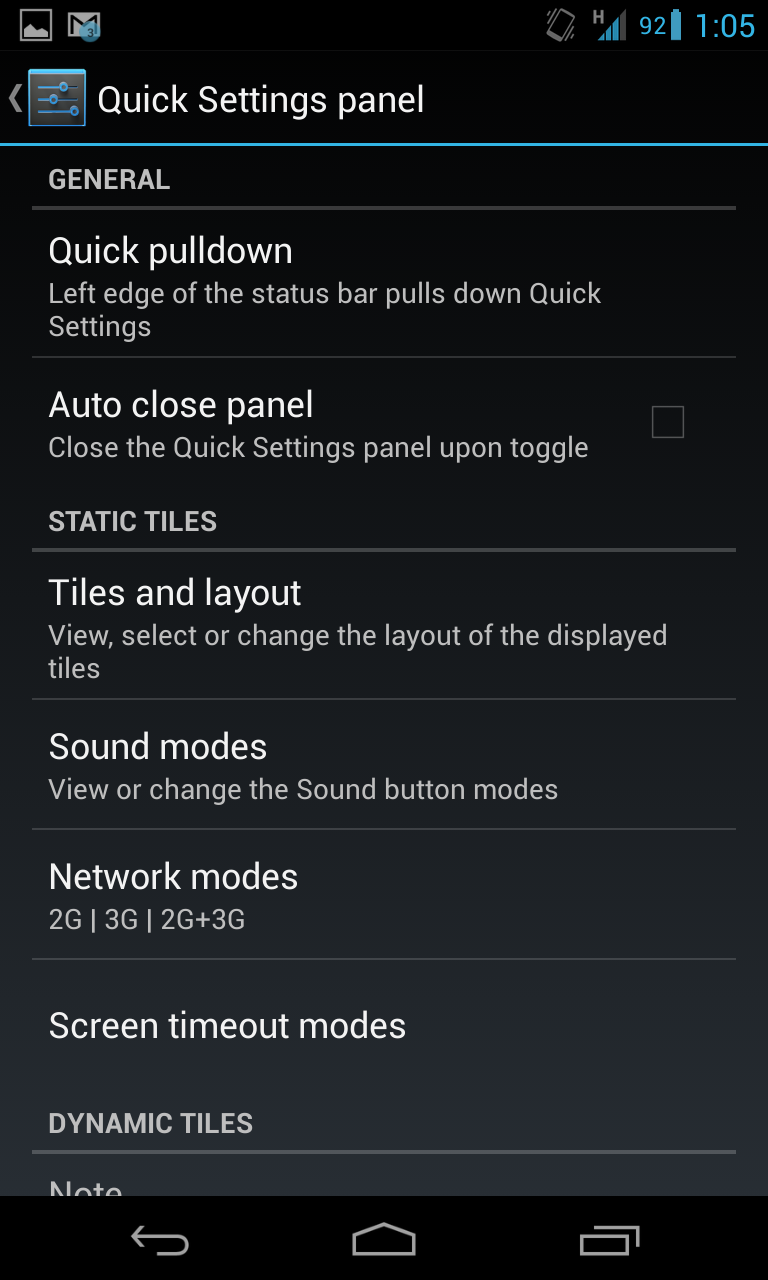 Quick settings options
Quick settings options
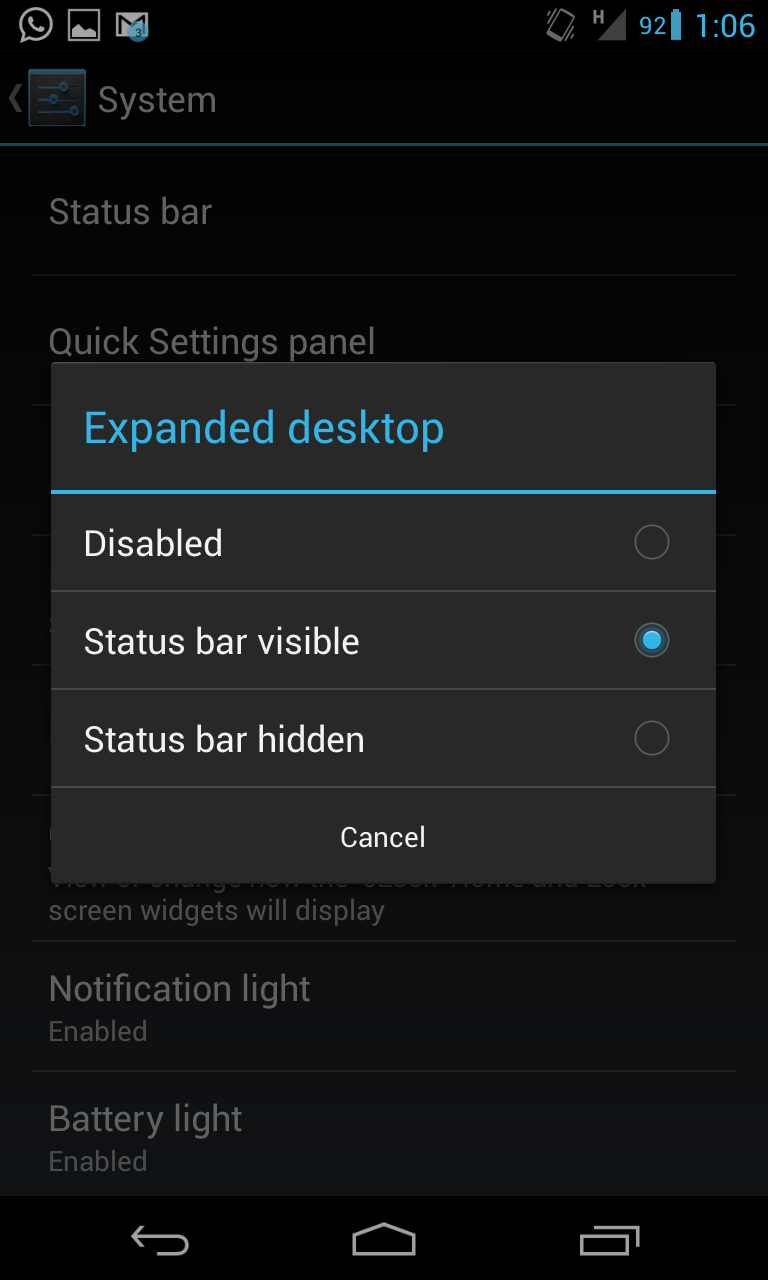 Expanded Desktop Mode Options
Expanded Desktop Mode Options
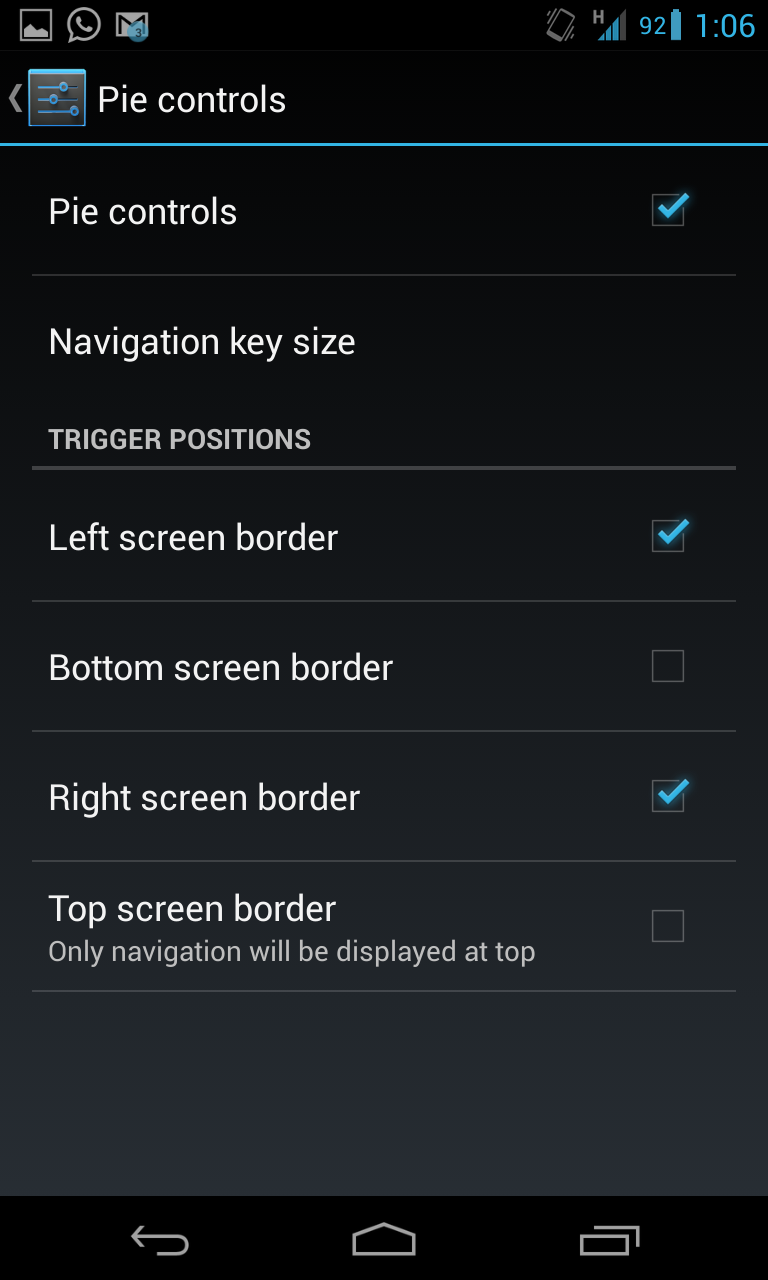 Pie controls
Pie controls
 Developer Settings
Developer Settings CLock widget settings
CLock widget settings System settings
System settings Quick settings options
Quick settings options Expanded Desktop Mode Options
Expanded Desktop Mode Options Pie controls
Pie controlsPros CyanogenMod 10.1
- Built-in updates "by air" (not incremental)
- Stock Android with a reasonable number of customizable options to attract new users
- Included is a beautiful lockscreen widget cLock
- Native profile support
- Partial support for Pie Controls (as in Paranoid Android)
- The ability to temporarily disable Root access for applications or via ADB
- Daily nightly builds more stable than AOKP
Pros of AOKP
Tweaking AOKP is just insane!
Please take a deep breath before reading the list below.
(I also advise you to familiarize yourself with the terminology in the Android interface - note. )
- Here you should start with screenshots
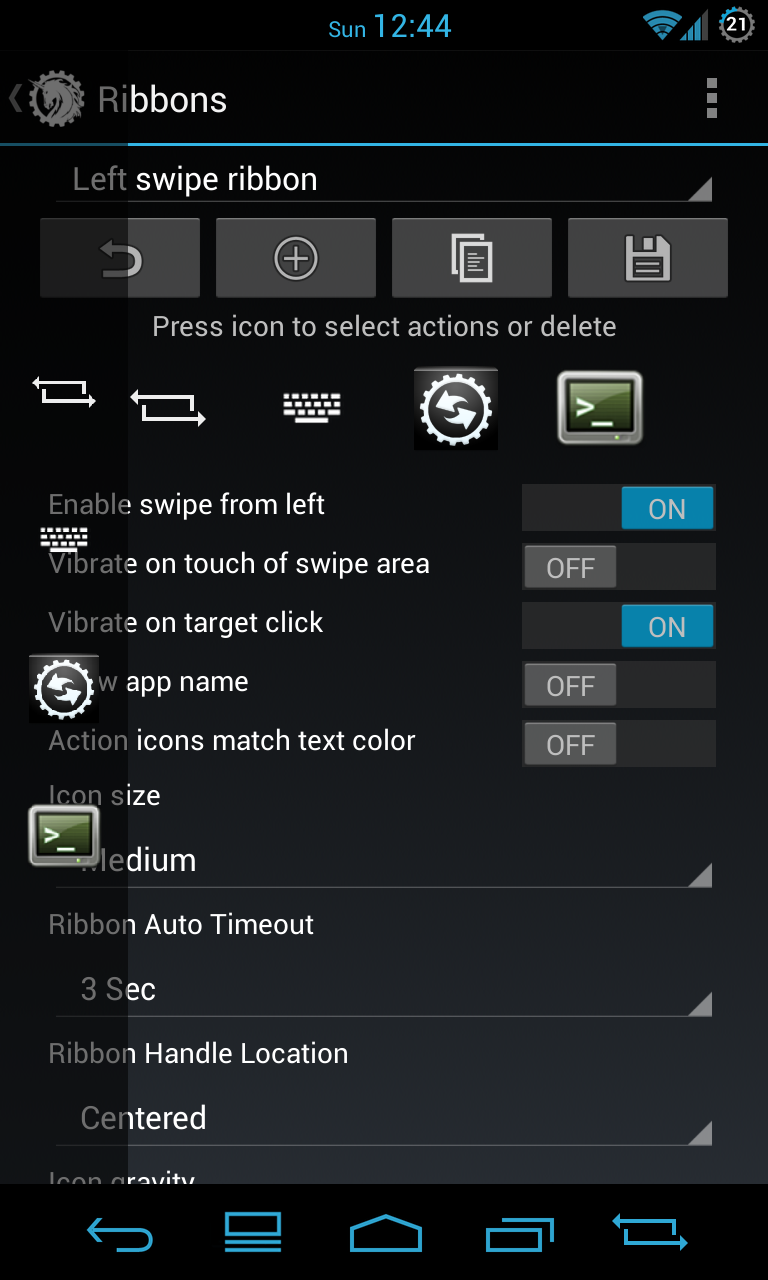 AOKP Ribbon (Sidebar Ribbon)
AOKP Ribbon (Sidebar Ribbon) Installer settings
Installer settings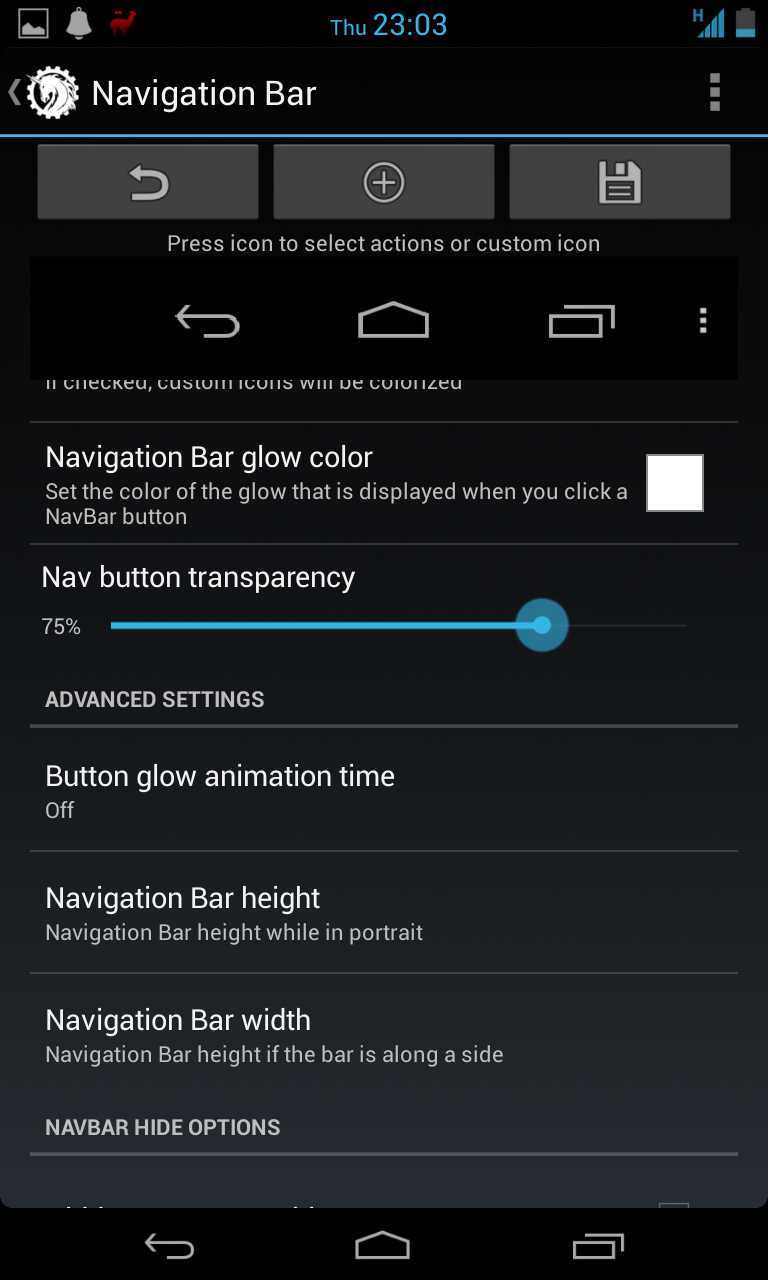 Transparency and sizes navigation bar
Transparency and sizes navigation bar Ability to add favorite contact to statusbar
Ability to add favorite contact to statusbar Ability to add any number of widgets to the lock screen and change the animation to the "carousel"
Ability to add any number of widgets to the lock screen and change the animation to the "carousel"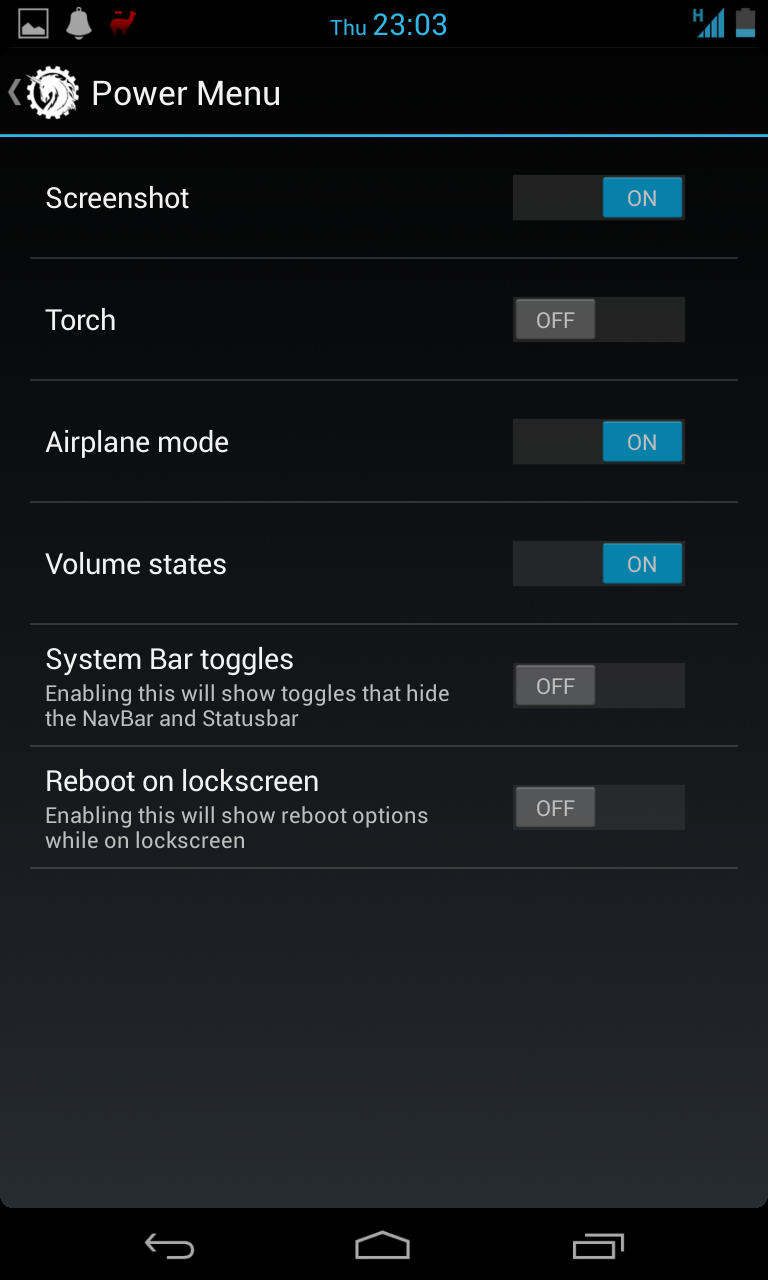 Ability to disable the reboot menu in the Power menu when the device is locked
Ability to disable the reboot menu in the Power menu when the device is locked Set your own way! carrier name, inclusion animation, and notification panel background
Set your own way! carrier name, inclusion animation, and notification panel background All available settings
All available settings Ribbon on lock screen
Ribbon on lock screen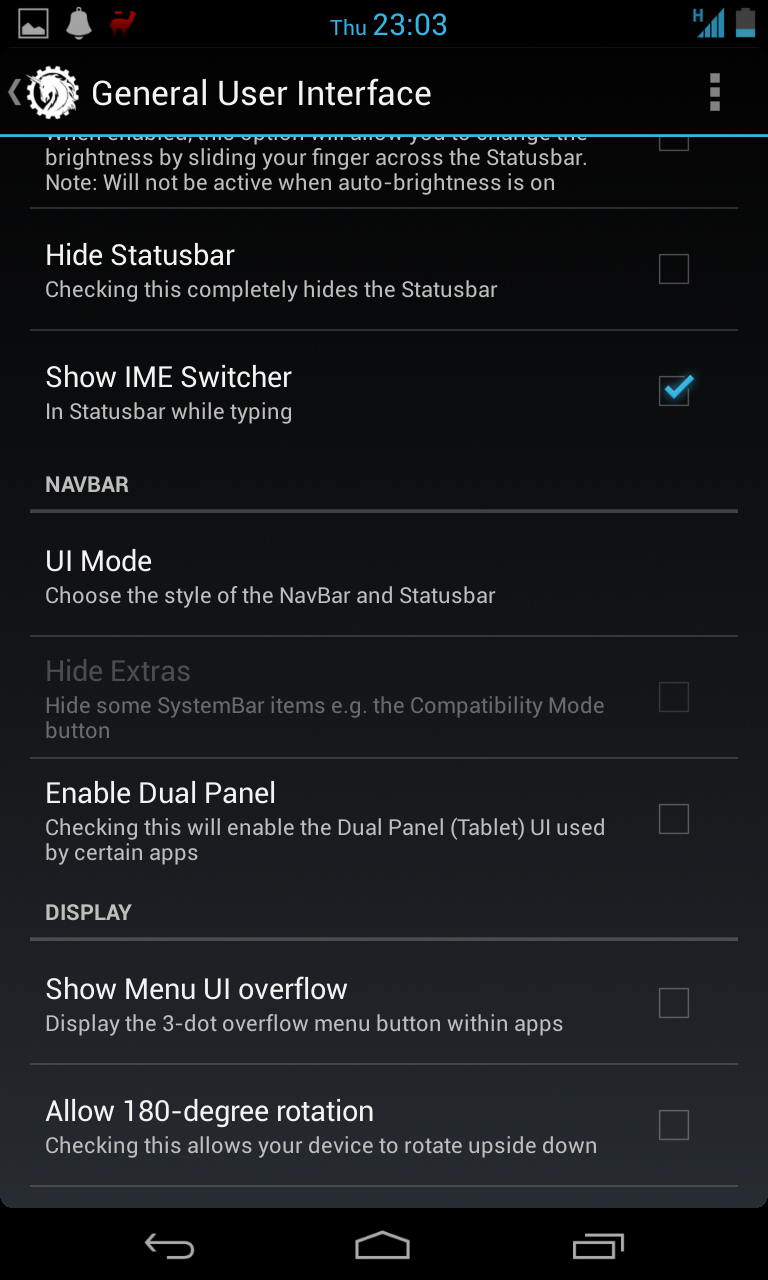 Tablet mode navigation bar
Tablet mode navigation bar The ability to transfer the battery indicator to the navigation bar
The ability to transfer the battery indicator to the navigation bar Settings navigation bar
Settings navigation bar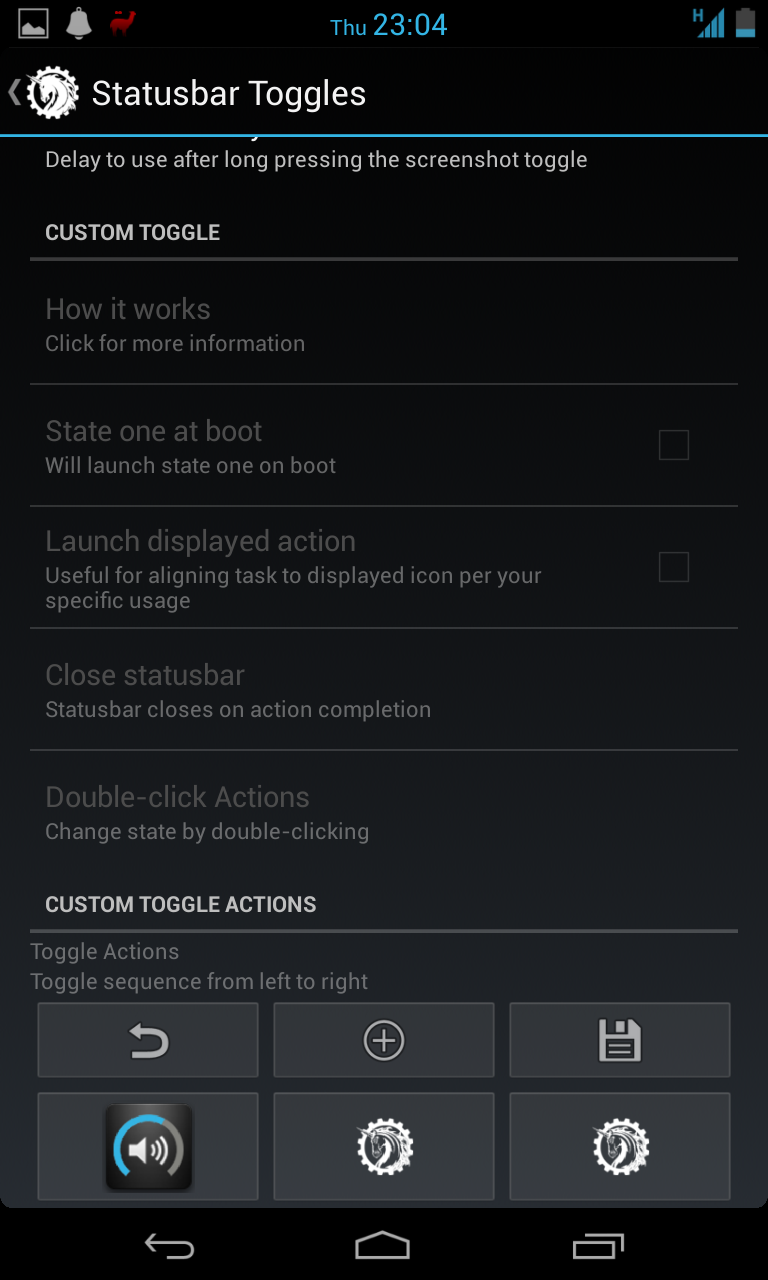 Custom switches
Custom switches Ability to set the number of shortcuts in the quick launch menu
Ability to set the number of shortcuts in the quick launch menu Auto cover navigation bar
Auto cover navigation bar
C Configuring vibration feedback for applications and contacts
Configuring vibration feedback for applications and contacts Clock settings
Clock settings - AOKP Ribbon - a control similar to the Ubuntu Mobile sidebar that can be pulled out of the corner of the screen with your finger to get quick access to your favorite applications. Yes, even to all applications of the device, i. In principle, with this thing you can do without the help of lunch at all.
- Ribbon on Lockscreen
- Ribbon and notification area widgets
- AOKP allows you to set more shortcuts on Lockscreen than CM10.1 (7 vs. 5). The same applies to the labels on the curtain (5 vs. 3).
- Setting the bottom panel with soft buttons (navigation bar) - You can also add shortcuts here as in CM10.1, but AOKP gives you much more options. For example, you can configure the action by a long press on the button in this panel
- Resize navigation bar
- Auto-cover navigation bar by timeout
- Select icons for shortcuts in the navigation bar
- Widgets in navigation bar
- AOKP also provides a larger selection of quick settings (on the curtain) than CM10.1
- Tablet mode navigation bar (status bar + nav.bar = 1 line down as in tablets
- Tablet (two-pane mode for some embedded
- Ability to display the remaining battery charge in a small bar in the navigation bar
- Choosing your own fun background in the notification area
- Choosing your own fun boot animation
- Setting an individual vibration for each application or contact
- Setting transparency status bar and navigation bar
- Ability to add your own switchesAbility to set custom toggles in Quick Settings
- Access permission management
- The ability to set the clock in the status bar in the center
- The ability to customize the action by a long press on the button in the quick settings menu (on the curtain)
- Swagger = HSV over 9000
Ufff! And this is not all, in AOKP there is also a car and a small truck of any less significant settings, but if all of the above doesn’t excite you, the rest is unlikely to be a more convincing argument in favor of this firmware. By the way, AOKP has several flaws, which are listed below.
Cons AOKP
- Nightly assemblies may be somewhat unstable, but they are also nightly assemblies. However, there will surely be geeks for whom this is fundamentally
- No built-in Pie Lancher or analogues (but there is a Ribbon - approx. Lane. )
- No profile support
- Smaller number of supported devices
- There is no single download point for nightly and even stable releases.
Conclusion
If after reading this post you are still in doubt, then I would advise you to just try both firmwares. Also note that the advantages of one firmware are automatically considered as minuses of another, and vice versa. Battery consumption is the same for both firmwares; both are based on the same slightly modified stock sink.
Despite the fact that users may notice some differences in performance between the firmware on the same device, ideally they should not be, because AOKP is based on the CyanogenMod device tree. From the foregoing, it is quite clear that the CyanogenMod team no longer participates in the competition to create the most flexible custom firmware.
Their new goal is to create a firmware that looks and behaves like a stock, but is equipped with important additional settings. On the other hand, one of the main goals of AOKP is to give its users the ability to customize the Android OS on their device to their own taste to the smallest detail.
From the translator, only a small survey in the end.
Source: https://habr.com/ru/post/183890/
All Articles